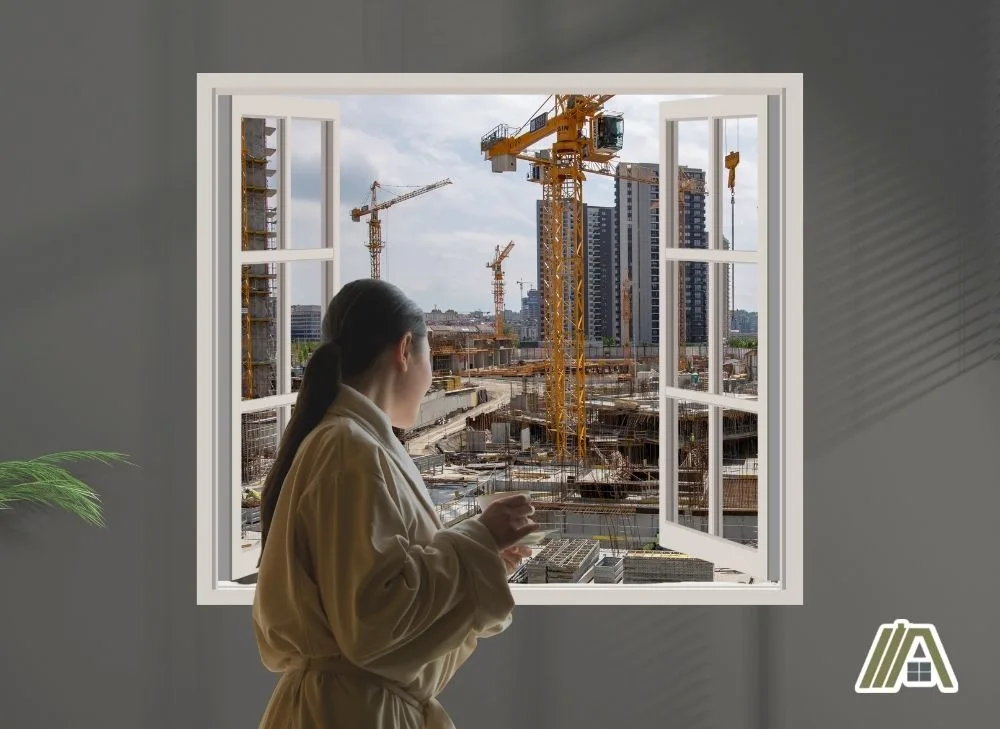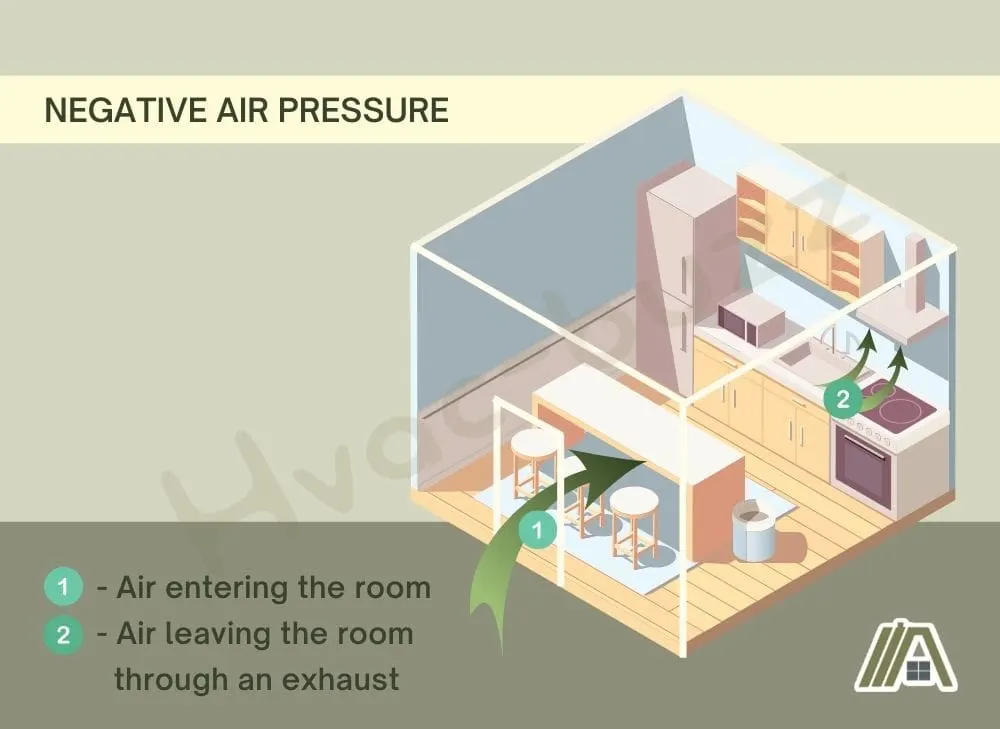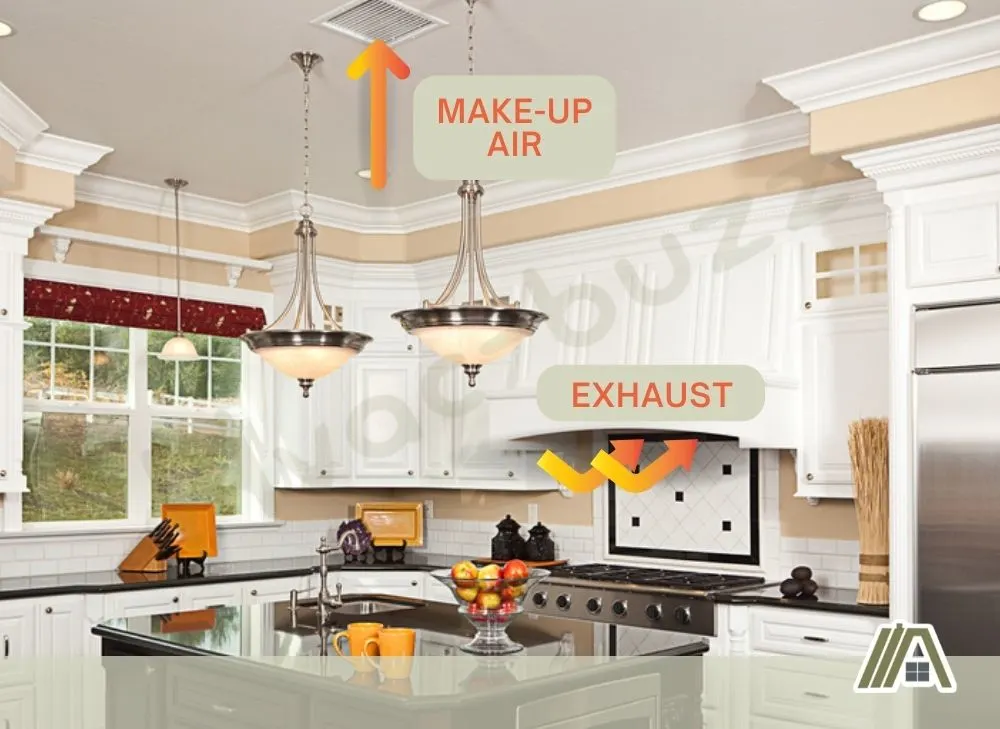Although on the surface, fresh air and makeup air may seem like they are the same, they are actually quite different. Not only do they differ in how they are defined, but also in how they are used.
Knowing such differences is important in maintaining one’s home and ensuring that the house complies with building codes.

Makeup air is air drawn in actively or passively from the outdoors or other areas in the house to make up for the negative air pressure created by exhaust systems. Fresh air is outdoor air allowed to enter the house to improve the indoor air quality, including the temperature.
Fresh Air
Fresh Air Refers to Origin and Cleanness
Fresh air is considered to be air from the outside that is typically cleaner than air from indoors.
Fresh air can be brought into indoor spaces, but once inside, the title “fresh air” and whether it still applies is really just a matter of preference.
In my eyes, if the flow of the fresh air to the inside is constant or through a wide open window or door, then I would still call it fresh air.
If the air is just coming through a small opening in the window or door and isn’t constantly flowing, then I would have a hard time saying that it is fresh air.
If the air was let into a room for only a few moments and then the opening was closed shortly after, I would also think that the “fresh air” title is lost fairly quickly.
The quality of the air from one moment to the next should play into whether it is “fresh air” or not too. For example, recently there has been construction outside of my home. Large machinery has been active, and the air has not smelled good or clean.

As such, I don’t consider that air to be fresh air, even if it were constantly flowing into a room through a large opening.
Purpose of Fresh Air Indoors
Obviously, fresh air that is outside serves no genuine or real purpose when considering the ventilation of a home.
When fresh air is allowed indoors, however, normally, it is to alter the quality of the air inside the home—affecting its temperature, diluting contaminants or odors, etc.
Additionally, when fresh air is allowed inside, the air itself is rarely altered. This is to say that it is not conditioned.
Letting fresh air into a home is an effective way to clear out air that you want to change the quality of (normally with the intent of improving the quality). Doing so seems to flood the room with fresh air and push out or overwhelm the undesirable air.
Most commonly, I find myself opening windows to let fresh air in when I cook and burn food or just don’t want smells lingering in the kitchen. The bathroom is another spot where fresh air can be invaluable.
Brought in Naturally
Air coming in through an HVAC system wouldn’t really be considered fresh air. This is because fresh air is normally associated with natural ventilation, meaning nothing is actively bringing it into the home.
That being said, fans and ceiling fans being put by open windows to help bring air in don’t change the title of the air, and I would still consider that fresh air.
Makeup Air
Fresh Air With a Different Purpose
Often, makeup air is pulled in from outdoors, i.e., it can be considered to be fresh air.
However, the purpose is not to improve the quality or temperature of indoor air. The purpose of makeup air is to replace air that is removed from the house, specifically air removed by exhaust ventilation systems.
So, things like your range hood or bathroom fan may require makeup air. Dryers, too, exhaust air, although this is not the function of a dryer, just a “side effect” of the main function.
The need for makeup air is to prevent the formation of negative air pressure in the room from which air is being actively exhausted.

When homes have a negative pressure, air from outside gets sucked into the home’s envelope. In small amounts, this is not problematic. When large volumes of air are drawn in, however, it causes all sorts of trouble, including:
- Drafts
- Increased utility bills
- Premature HVAC system failures
- Drain gurgling and slow drainage
- Sewer gases pulled from drains
- Ineffective exhaust systems
- Backdrafting of combustion gases
Read more about this in Signs Your House Needs (More) Makeup Air
Having makeup air helps keep the pressure inside the home equal to the pressure outside the home. This then lowers the possibility of the negative effects described above.
Makeup Air Can Be Conditioned
Makeup air can be heated or cooled and can have moisture added or removed. To achieve such conditioning of the makeup air, there must be an active pulling of the air into the home (this will be discussed further below).
Makeup air is heated or cooled using a makeup air unit.
Such a unit takes the makeup air and heats it using liquid propane or natural gas before releasing it into the house. Such systems are extremely efficient.
The unit can also cool the makeup air via a refrigerant-containing coil. Heat from the air is absorbed into the coil as the air passes over it, and the air is cooled before being delivered into the room.
Makeup air units can also remove the moisture from the air. This is done when the air passes over the cooling coils of the unit and contracts. When the air contracts, condensation is formed and left inside the machine, and the dryer air is released into the room.
Moisture can also be added to makeup air. Makeup air units can add moisture to the air by using vibrations to transition water into extremely fine water droplets. These droplets are then added to the air that is released, and thus, the makeup air has moisture added to it before it enters the room.
The purpose of conditioning the makeup air is to prevent the supply of air that will detract from the comfort and quality of the air in the house.
For example, if you have your heating on, then the last thing you want to do is bring in air as cold as it is outside. In addition, if you are running dehumidifiers to try and prevent your wooden floor boards from warping in the rainy season, then you don’t want to be adding more moisture to the air.
Actively or Passively Pulled In
Makeup air can be actively or passively brought into homes.
Most often, makeup air units actively bring air into the home, much like the HVAC system. Such makeup air systems can encompass an entire home or just specific rooms.
For example, it is common for kitchens to have makeup air systems, even if the entire house does not have one. This is because kitchens with range hoods or other similar exhaust systems will depressurize quickly, and actively supplying makeup air can balance the pressure more quickly than a passive system.

Makeup air can also come into a home in a passive way. Such systems do not use a fan to bring the makeup air into the home.
In the case of passive makeup air, normally, additional holes are cut in the exterior of the home. These are connected through ductwork to the rooms in need of makeup air.
When the pressure drops inside the house, air passively flows down the pressure gradient through the conveniently provided holes in the exterior of the house.
There is less control and no conditioning for these systems.
Transfer Air
A little earlier, I said that most makeup air comes from the outside. However, makeup air does not have to start as fresh air. It can also be pulled in from other areas and spaces in the house.
Without makeup air systems, this naturally occurs, but in an undesirably uncontrolled manner. By deliberately creating pathways for makeup air to come from other rooms, you are avoiding having to condition the air, but you are avoiding the negatives of sourcing air from these spaces.
Of course, not all the negatives can be avoided. If you are pulling air from another area of the house, you are exposing that place to the effects of negative pressure unless such areas are well-ventilated themselves.
